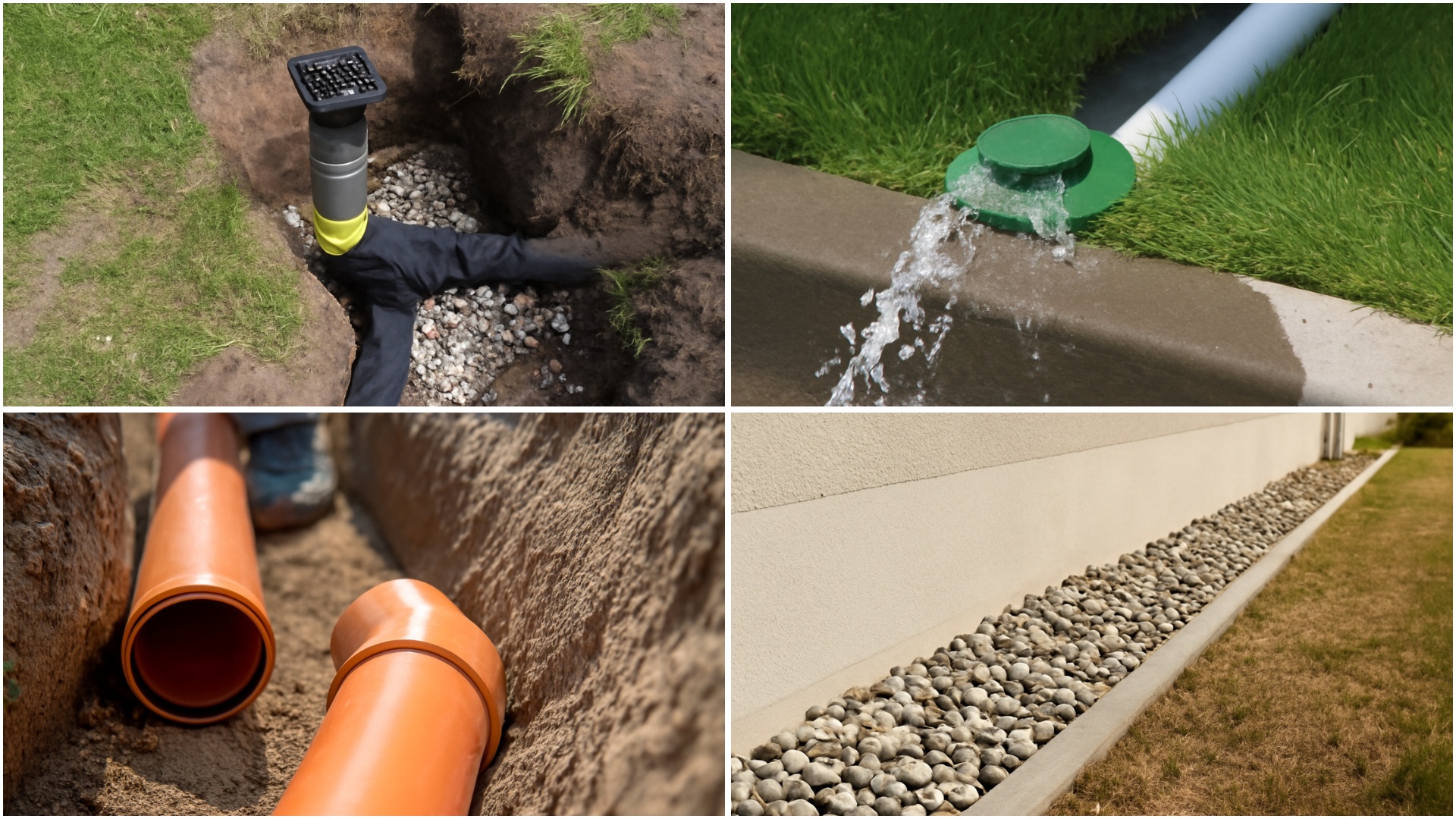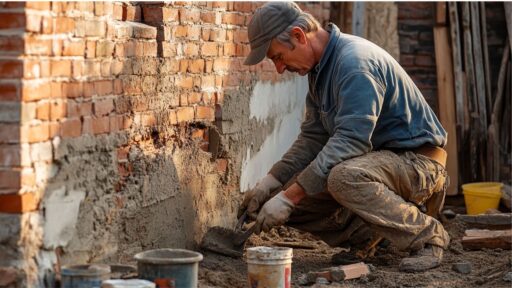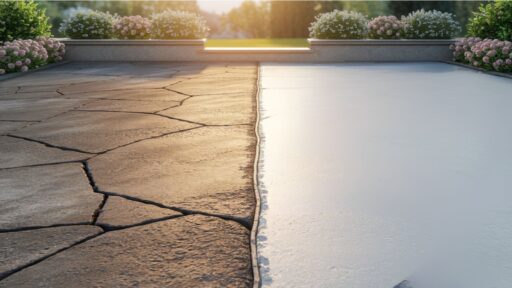Is your basement staying damp despite your sump pump working overtime?
The problem might not be your pump, but where all that water ends up!
Finding the right sump pump discharge ideas can make all the difference between a truly dry basement and ongoing moisture issues.
Every year, homeowners face flooded basements and foundation damage because their sump pumps send water right back toward their homes.
If you’re facing freezing winters, limited yard space, or strict neighborhood rules, a perfect discharge solution awaits you.
From simple pipe extensions to creative landscaping options, you’ll find out how to direct water away from your home for good.
Say goodbye to that soggy basement feeling and hello to peace of mind during even the heaviest rainstorms!
Understanding Sump Pump Discharge Basics
Your sump pump system works hard to keep your basement dry, but where does all that water go?
The discharge line is the pipe that carries water away from your home after the pump collects it.
Think of it as the exit route for unwanted water. Getting this right is super important.
If water doesn’t drain far enough away, it can flow back toward your foundation.
This can cause damage to walls, create mold problems, and wash away soil around your home.
This defeats the whole purpose of having a sump pump!
Plumbing guidelines recommend your discharge point should be at least 10 feet from your house, though some local rules might require more distance.
Many areas have specific codes about this, so it’s worth checking what applies to your neighborhood.
Remember, the goal is simple: move water away from your home’s foundation to keep things dry and stable.
Key Considerations Before Choosing a Discharge Method
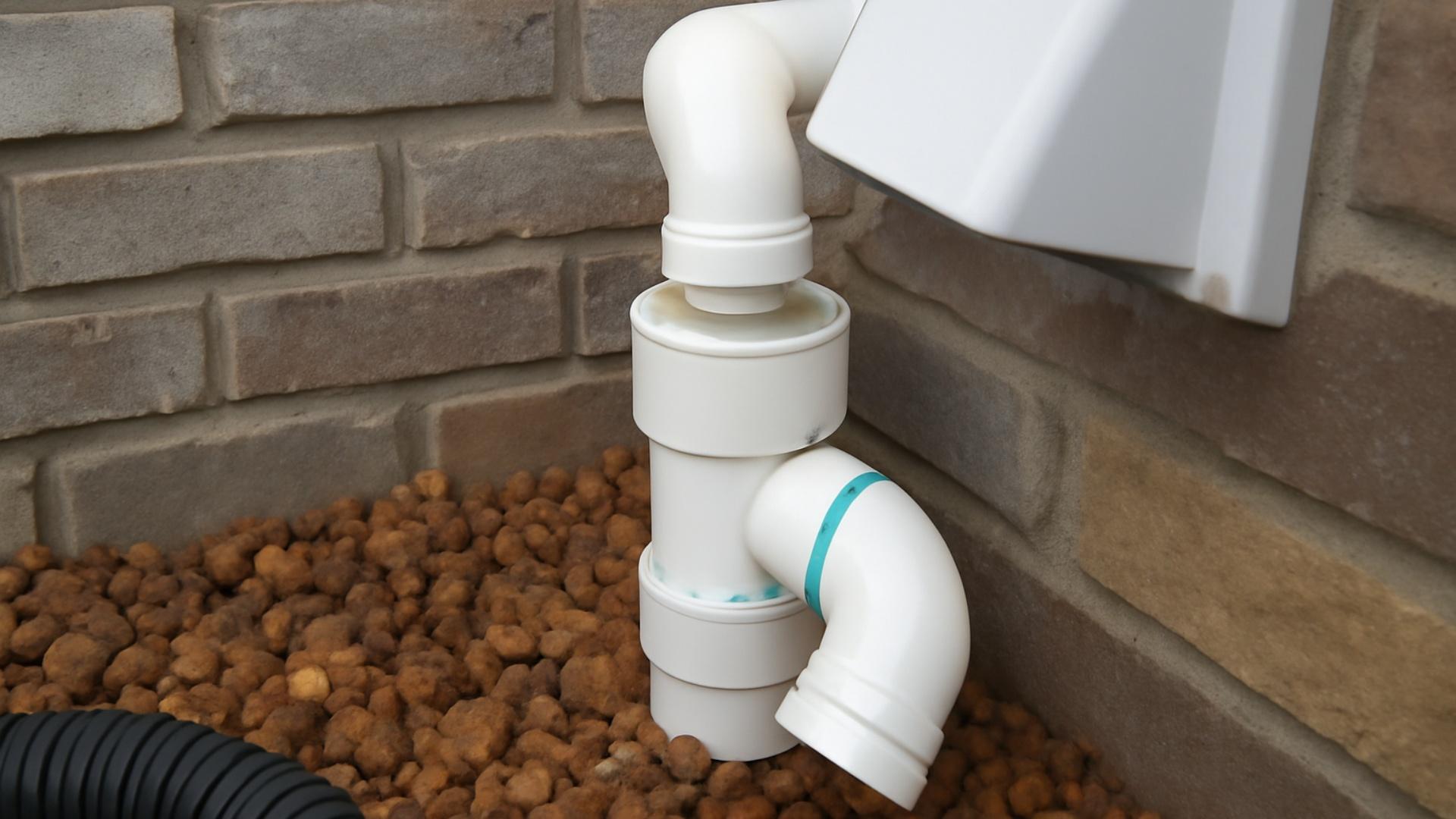
Before setting up your sump pump discharge, consider several important factors.
These will affect which solution works best for your home.
Taking time to understand these considerations now can save you from headaches and costly fixes later.
Consider the following points to keep in mind before making your decision.
1. Local Building Codes and HOA Rules
Always check your local rules before installing anything.
Many cities have specific laws about where water can drain.
Some don’t allow water to flow onto sidewalks or streets.
HOA (homeowners’ association) communities often have extra rules about what you can build or modify on your property.
Breaking these rules may result in fines or requiring you to redo your work.
A quick call to your local building department or homeowners’ association (HOA) can save you trouble down the road.
2. Climate and Seasonal Challenges
Your local weather conditions play a significant role in planning your discharge system.
In cold areas, water in pipes can freeze during winter, blocking flow and potentially damaging your pump.
Areas with heavy rain require systems that can handle large water volumes without becoming overwhelmed.
Regions with dry or wet seasons may require different solutions at different times of the year.
Plan for your worst weather conditions, not just average days.
3. Terrain and Yard Slope
The shape of your yard affects where water naturally flows.
Ideally, your yard should slope away from your house.
If it doesn’t, you’ll need to plan carefully to prevent water from seeping back in.
Flat yards present challenges since water won’t move away on its own.
Hilly yards offer good drainage options but may need longer pipes.
Walk your yard during rain to see where water naturally collects and flows.
4. Type of Soil
Different soils handle water in various ways.
Sandy soil drains quickly but might not hold up drainage pipes well.
Clay soil holds water longer and can become waterlogged, pushing more work onto your pump.
Soil type affects how far water travels underground and whether it may return toward your foundation.
Testing your soil or observing how puddles behave after rain can provide clues about what you’re working with.
5. Volume of Water Typically Pumped
The amount of water your sump pump can handle affects your discharge needs.
Homes in wet areas with high water tables might pump gallons every few minutes during storms.
Others might run just occasionally.
If your pump works hard frequently, you need more robust discharge solutions that won’t get overwhelmed.
Check how often your pump runs during wet periods to understand your water volume needs.
A Compilation of Sump Pump Discharge Ideas
Seeking the most effective way to manage your sump pump water?
Here are some solutions; each option has its benefits depending on your specific situation.
Review these ideas to find the ideal solution for your home’s specific needs.
1. Above-Ground PVC Pipe System

This is the most common discharge method because it’s both affordable and straightforward.
The PVC pipe carries water away from your foundation above ground.
You can easily identify if there’s a problem, such as a clog or crack.
To prevent pipes from moving, use stakes or straps to secure them in place.
Many homeowners hide pipes with plants or decorative covers to make them less noticeable.
2. Underground Drainage Pipe
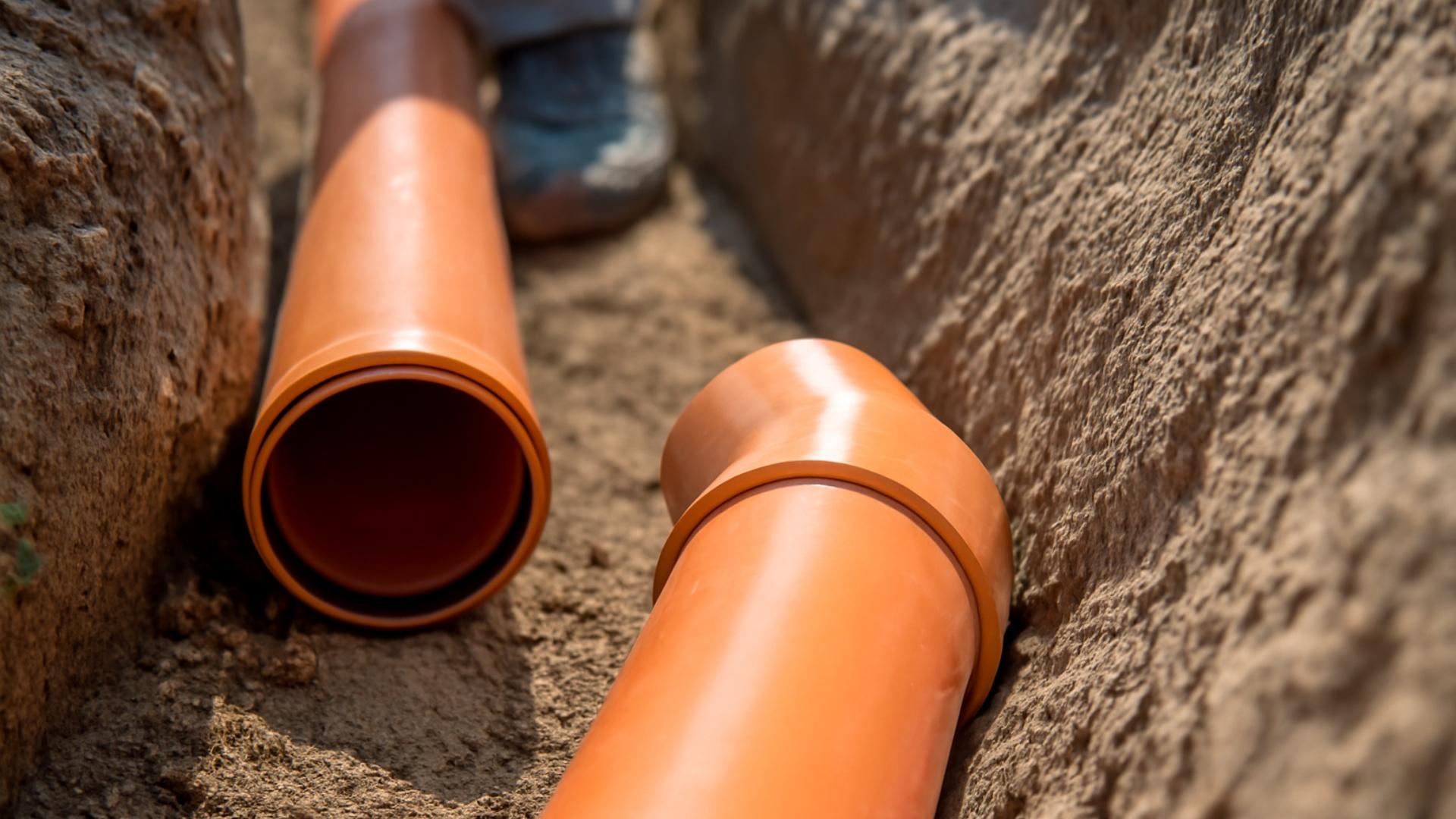
Want a cleaner look for your yard? Underground pipes hide the drainage system completely.
These pipes stay protected from freezing and lawn mower damage.
You’ll need to dig a trench at least 12 inches deep to install them properly.
For even better drainage, consider combining this system with a French drain that collects water along its length, effectively moving the water away from your pump.
3. Pop-Up Drain Emitter

Pop-up emitters are clever devices that stay flush with your lawn when not in use.
When water pressure builds, they pop up to release water, then close again afterward.
This prevents tripping hazards and makes mowing easier.
They work best at the end of an underground pipe system and in areas with good natural slope away from your house.
4. Dry Well System
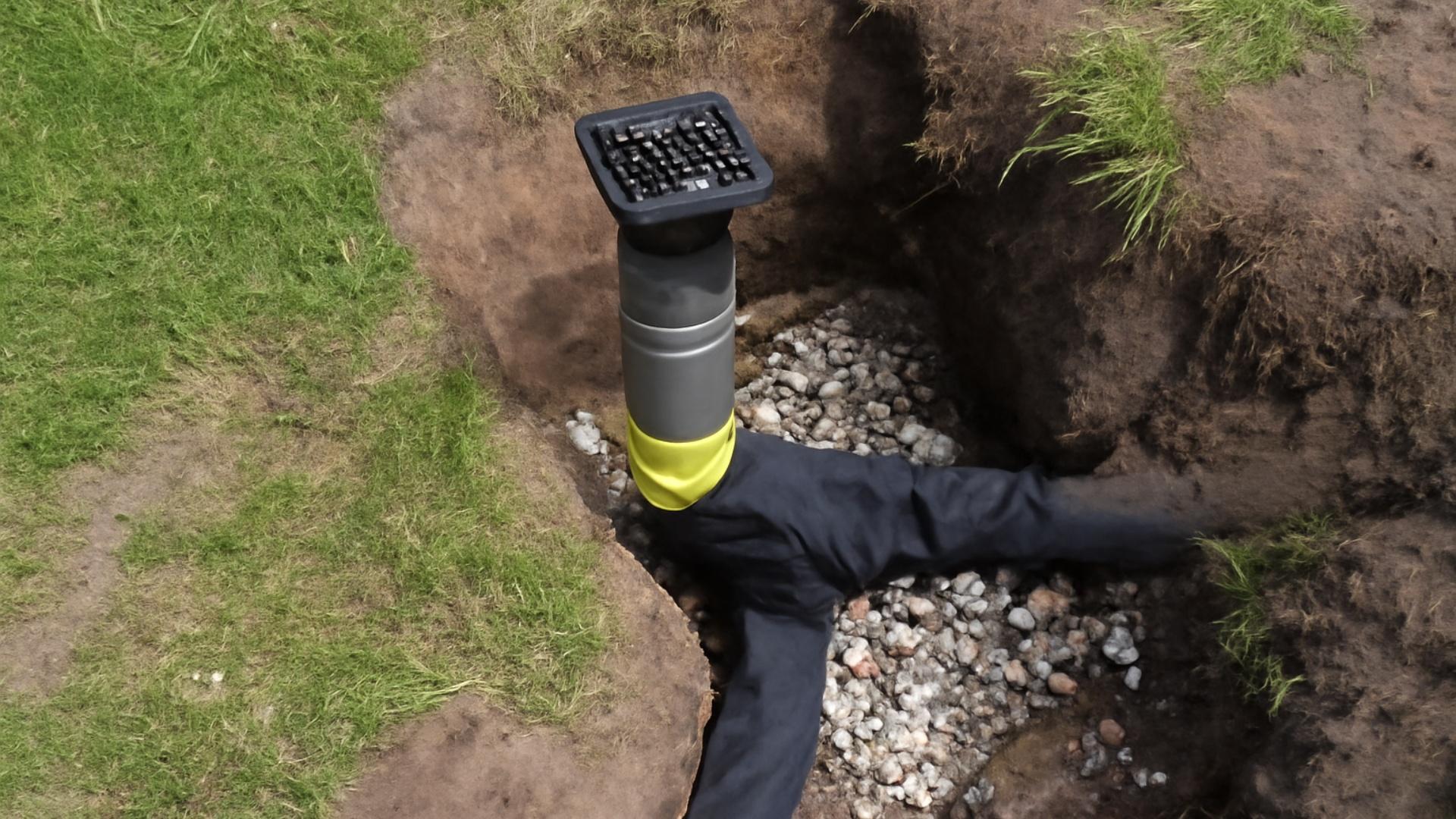
A dry well is an underground chamber filled with gravel that collects sump water.
The water slowly soaks into the surrounding soil instead of flowing across your yard.
This works well for homes without a good drainage path or access to a storm sewer.
Dry wells come in various sizes, depending on the amount of water you need to handle.
5. Rain Garden
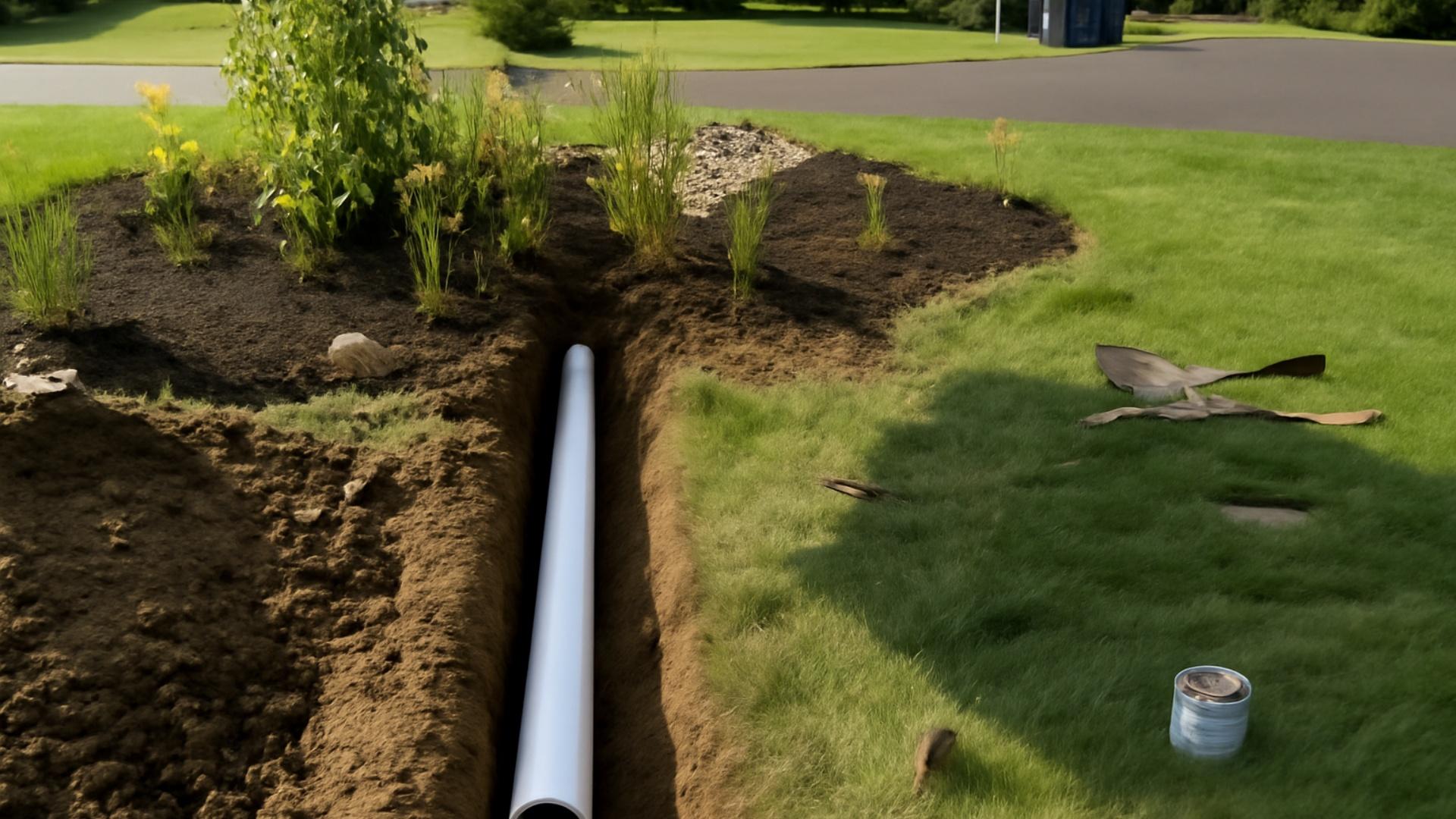
Turn your drainage problem into a beautiful garden feature!
A rain garden is a shallow depression filled with water-loving native plants.
It captures sump discharge and allows it to soak in naturally.
The plants help filter the water while adding color to your yard.
Rain gardens attract butterflies and birds, transforming a problem area into a mini-wildlife habitat.
6. Storm Drain or Gutter Connection (If Legal)

Connecting your sump pump to a storm drain or gutter system efficiently moves water away from your property.
This method is particularly effective in urban areas with established drainage infrastructure.
You’ll need to install a check valve to prevent backflow during heavy rains.
Before attempting this, please contact your city’s water department, as many places have strict regulations.
7. Drainage Trench or Swale
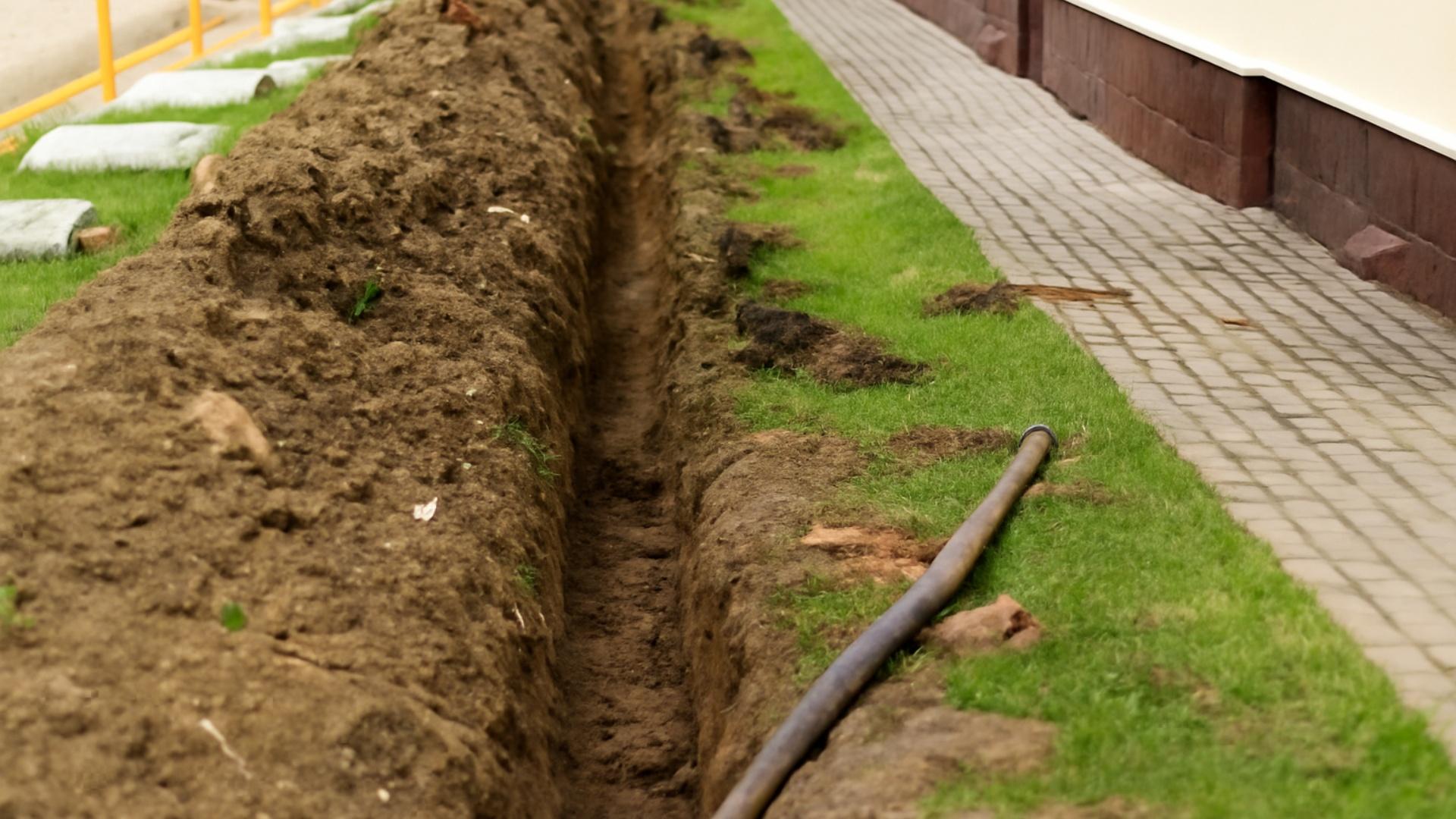
A swale is a shallow, sloped channel that guides water downhill following the natural contours of your land.
It’s less evident than a pipe and blends with your landscape.
Line your swale with river rocks for faster drainage or grass for a more natural look.
This option works best on properties with natural slope.
8. Rain Barrel Collection System

Why waste good water? A rain barrel captures your sump discharge for later use in your garden.
Most barrels hold 50-80 gallons and are equipped with a hose for easy watering.
This system works best for homes with occasional pump activity rather than constant water flow.
Include an overflow pipe for periods of heavy use.
9. Rock Bed or Gravel Pit

This simple solution lets water slowly soak into the ground through layers of stone.
Dig a shallow pit and fill it with gravel or crushed stone.
The spaces between rocks temporarily hold water until it drains into the soil.
You can make it look nice with decorative stones on top that match your landscaping.
10. Retention Pond or Catch Basin

For homes with serious water issues, a small pond can capture large amounts of runoff.
The pond holds water during heavy rain and allows it to seep into the ground slowly.
This option requires ample space and a well-designed layout.
Although it requires more work to install, it creates a natural water feature for your yard.
11. Flexible Corrugated Drain Pipe

These black, ribbed pipes bend easily around corners and obstacles in your yard.
They’re lighter and cheaper than PVC and simple to cut to size.
You can quickly move them if you change your mind about placement.
The ridges can catch debris over time, so regular checks prevent blockages.
Common Mistakes to Avoid

Even a well-designed sump pump system can fail if you make these common errors.
Pay attention to these potential problems to keep your basement dry and your discharge system working properly year-round.
- Discharging water too close to your house invites it back into your basement.
- Ignoring the yard slope can send water right back to your foundation or that of your neighbors.
- Small pipes cause backups during heavy rain. Use at least 1.5-inch diameter pipes.
- Weak pipe connections create leaks where you least want them.
- Improperly sloped pipes trap water that freezes in cold weather.
- No backup plan means flooding when your system fails at the worst time.
Taking time to avoid these mistakes now will save you from costly repairs and water damage later.
Remember that a good discharge system is just as important as having a working pump.
Wrapping It Up
Finding the right sump pump discharge ideas for your home doesn’t have to be complicated.
The perfect solution depends on your yard, climate, and how much water you’re dealing with.
Remember, the goal is simple: move water away from your foundation permanently.
If you choose a basic PVC pipe system, an underground drain, or get creative with a rain garden, what matters most is proper installation and regular maintenance.
Take time to check your system before major storms hit, especially during seasonal changes.
By investing a little effort now in the right discharge method, you’ll protect your home from water damage for years to come.
Your basement will stay dry, your foundation will remain strong, and you’ll never have to worry about where all that water goes again!
Found the best ways to manage sump pump discharge?
Explore more blogs in our home maintenance section to protect your home!


